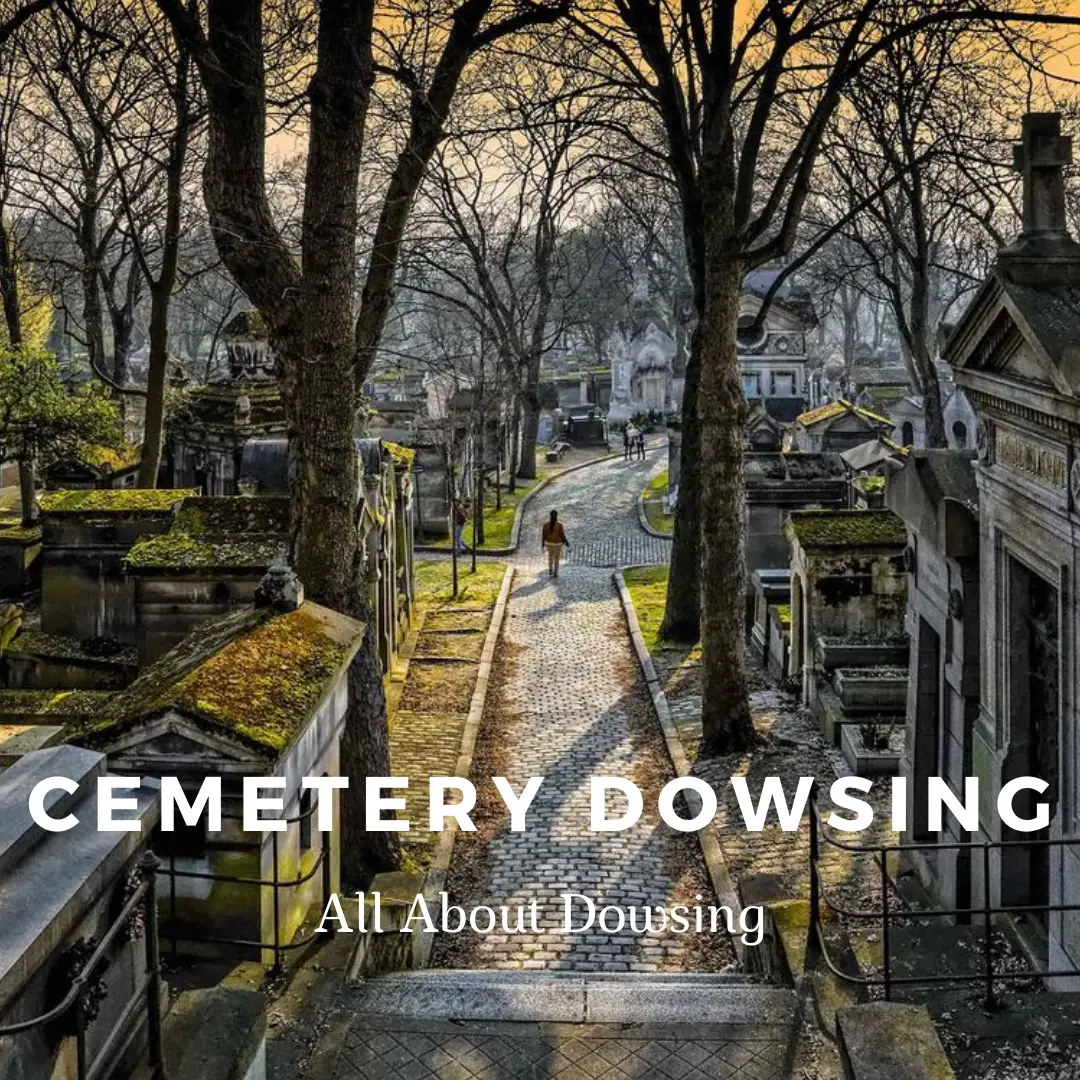Cemetery dowsing, believed to be a divine practice, focuses on discovering unmarked graves; cemetery dowsing can be also used to connect with the spiritual essence of the dead, while being in their close proximity. It can be used by cemetery caretakers (or anyone) tasked with the responsibility of restoring headstones to unmarked graves, or to make a spiritual connection with an object that belonged to a person who passed. In many ways, cemetery dowsing presents parallels with spiritual dowsing.
- Explore Copper Dowsing Rods => here
- Click Here for => Dowsing Boards
- 500 years of dowsing => Get The Book Here
The history of cemetery dowsing can be traced back to the 16th century with the Germans (although Germans from those days would use dowsing to trace mineral deposits and groundwater levels). Over time, dowsing has advanced further to several other levels.
What is Witching a Grave?
Witching a grave is when you walk around a cemetery and use divining rods to locate unmarked graves, or otherwise unknown graves. It is believed that the practice of dowsing can help you find these graves.
The practice has been around for centuries, but it really came into its own during the witch trials of Salem and other parts of New England. The practice was used by religious zealots seeking to root out witches from their midst.
Can Dowsing Find Graves?
Yes, dowsing can find unmarked graves. In fact, there are many people who believe that dowsing has helped them locate unmarked graves before they were found by other means. Cemetery dowsing, believed to be a divine practice, focuses on discovering unmarked graves. Some people believe that this practice will allow them to communicate with the spirits of those buried in the cemetery and give their family peace about what happened to their loved one.
The body leaves, but the energy remains
The practice of grave dowsing can be used to find graves in cemeteries. It is believed that the energy of each person who was buried at a cemetery will remain there for some time after their death. Dowsers believe that by using divining rods or other devices, they can locate areas where people were buried and determine if any unmarked graves exist within this area.
Cemetery dowsing ultimately consists of exploring energies and vibrations emitted by burial areas, burial places and objects that belonged to the dead.
For example, if you were to dowse in an ancient battlefield (where many people died), you may be able to establish a dowsing connection with the souls of those people who passed on that battle. This often also results in the finding of objects that belonged to these people.
- Explore Copper Dowsing Rods => here
- Click Here for => Dowsing Boards
- 500 years of dowsing => Get The Book Here
In a way similar to spiritual dowsing, cemetery dowsing is also practised by people in search of energies in the spiritual realm.
The use of dowsing in detecting human bodies can attributed to its affordability and reliability in contrast to the use of geophysical methods, especially in underdeveloped, remote and rural areas. In addition to being affordable, it is believed that dowsers can distinguish the buried body from male to female. In some cases, where natural disasters or war events occurred, some communities rely on cemetery dowsing to identify the areas where to search for their loved ones who went missing.
How do dowsing rods detect human bodies or coffins?
Numerous theories try to explain the concept of dowsing, including cemetery dowsing. One common theory is the detection of soil disturbances. The dowsing rods are believed to detect voids in the soil structure. Shifts in the magnetic fields of the earth -also another theory- where the rods move as an effect of variations in the magnetic fields of an area. In a cemetery, the rods move when one moves past a gravesite,, or place that was associated to the death of a person. To distinguish between male and female, the rods will move on a different direction for each specific gender.
The ideology of cemetery dowsing is deemed by many as pseudoscience, and highly associated with superstition. In the past, this would be also regarded as an occult practice. As other types of dowsing, you need to believe first.
Important remarks
- If you are going to a cemetery and start dowsing, keep in mind that burial facilities often regulated by special legislation from the national and local governments.
- You should always get the necessary information from the local authorities before doing anything in a cemetery, and most importantly, DO NOT START DIGGING!
- A better place to start would be an historical battlefield or place where you know is abandoned and not covered by special regulations.
- Also, if you happen to find the bones of an animal in the forest, you could also start dowsing from there. Dead things (that once lived) can be dowsed without having to disturb people’s souls, especially if you are a beginner.
Final thoughts
All in all, cemetery dowsing is an option for many people. There are few considerations and limits to keep in mind, so it is a technique that is more suitable for experienced dowsers. If you are reading this and are a beginner, then we would suggest you to get started by reading this article first.

